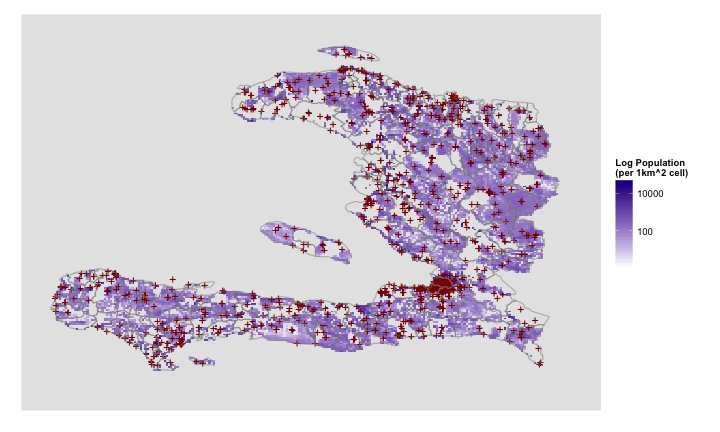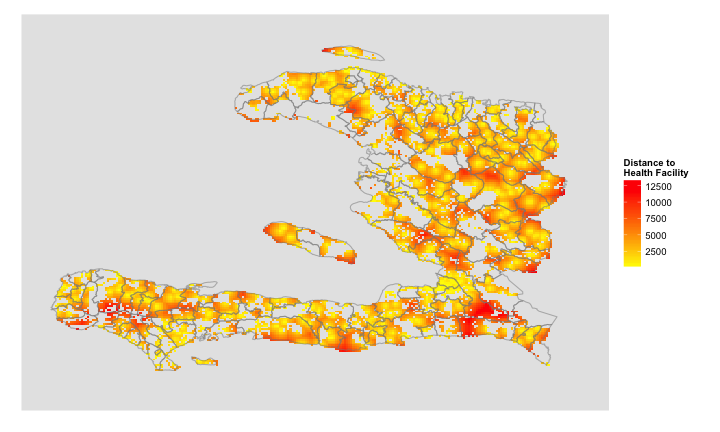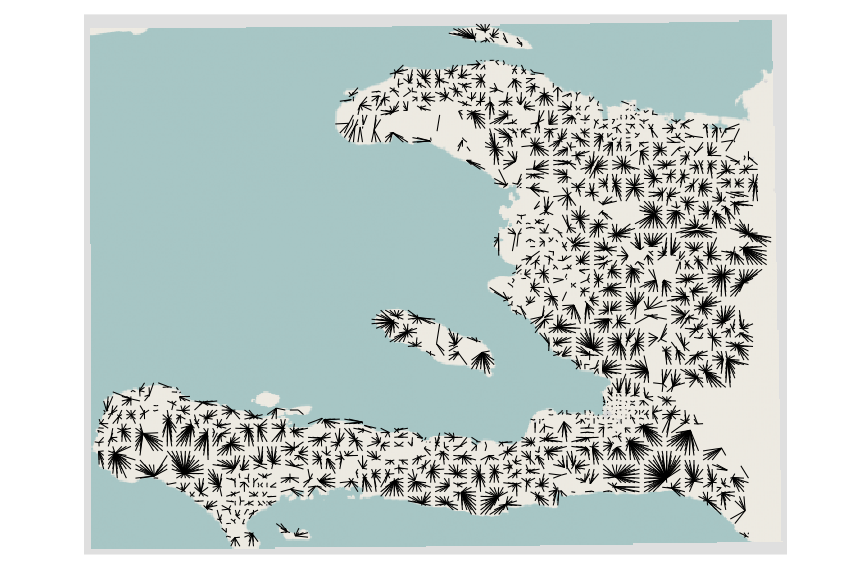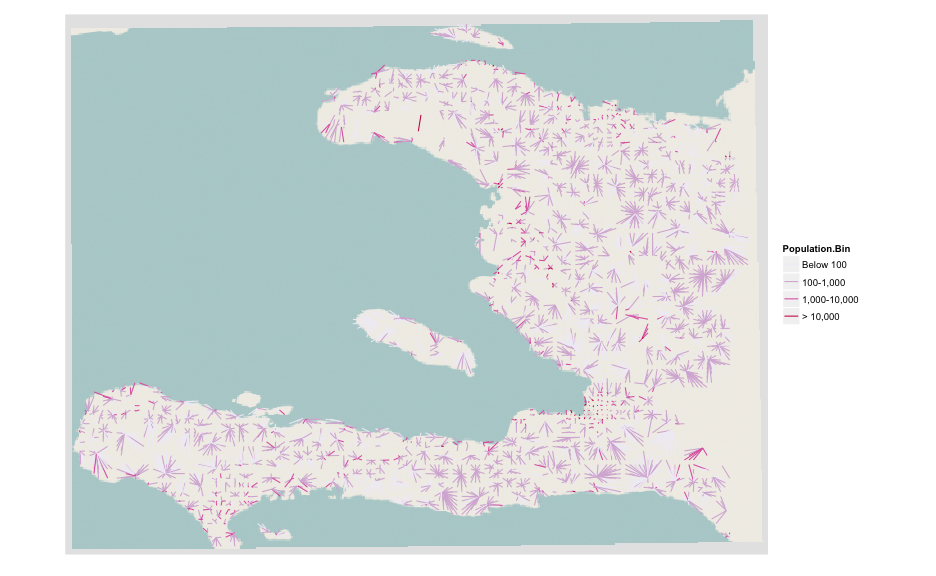In this presentation, we will look at visualizations of access to health facilities in Haiti.
The datasets we are working with are a population estimate, 2003, from the US Census Bureau. The resolution of this dataset is 100m2 per cell/pixel, but the analysis in this presentation will be done at an aggregation of 1km2 per pixel.
The health facility dataset is from GeoCommons.




